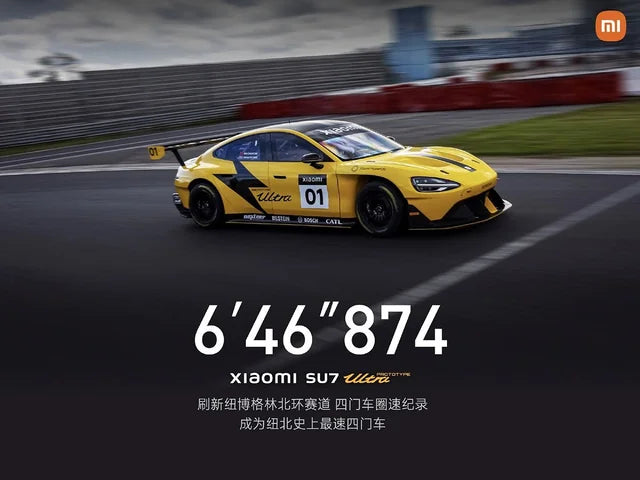The Rising Demand for Chinese Performance and Luxury Cars

The global automotive industry is witnessing a transformative shift, with Chinese performance and luxury cars rapidly gaining ground, while European brands struggle to maintain their once-unassailable dominance. Chinese manufacturers, once dismissed as producers of budget vehicles, are now setting the pace with cutting-edge technology, cost-effective production, and feature-rich designs. Brands like BYD, NIO, Xiaomi, and Huawei are not only capturing the Chinese market but also making significant inroads globally, leaving European giants like Volkswagen, BMW, and Mercedes-Benz scrambling to keep up. This seismic change is driven by innovative new models, record-breaking performance, declining European sales, efficient production processes, and superior accessory options in Chinese vehicles.
In 2025, Chinese automakers are unveiling a wave of supercar models that are redefining performance benchmarks. Xiaomi’s SU7 Ultra, a 1,548-horsepower electric hypercar, recently made headlines by setting a blistering lap time at Germany’s Nürburgring race track, dethroning the Porsche Taycan Turbo GT as the fastest production EV. This achievement underscores China’s growing prowess in engineering vehicles that rival, and often surpass, European icons. Similarly, BYD’s Yangwang U9, a 1,300-horsepower supercar with a unique pothole-jumping suspension, has captivated global audiences with its blend of innovation and spectacle. Other upcoming models, such as NIO’s EP9 successor and Xpeng’s P7+ hypercar, promise to push the boundaries of speed and design further, signaling China’s ambition to dominate the high-performance segment traditionally led by European brands like Ferrari and Lamborghini.

European carmakers are losing their grip on China, the world’s largest automotive market, where their market share has plummeted from 64% in 2020 to just 35% in 2024. German brands, once the epitome of luxury, saw their share drop from 25% to under 15% in the same period. This decline is driven by Chinese consumers’ preference for domestic brands, which offer comparable quality at lower prices. Globally, the picture is equally grim for Europe. In January 2025, new car registrations in the EU fell by 1.9%, while Chinese brands saw a staggering 52% surge, capturing a 3.7% market share. In markets like Brazil and the Middle East, Chinese exports are outpacing European ones, with brands like Chery and Geely gaining traction. High production costs, slow transitions to electric vehicles (EVs), and reliance on imported batteries have left European manufacturers vulnerable, while Chinese EVs, priced 20-30% lower, benefit from vertical integration and government support.
China’s production processes are a cornerstone of its automotive ascendancy. The country controls over 80% of global lithium-ion battery production and dominates the supply of critical materials like lithium, cobalt, and nickel. This allows Chinese manufacturers to produce EVs at a fraction of the cost of their European counterparts. For instance, CATL, China’s leading battery maker, supplies high-capacity cells at prices up to 30% lower than European competitors. In contrast, Europe’s battery production capacity is projected to meet only 15% of its EV demand by 2030, forcing reliance on costly imports. Chinese brands also leverage streamlined supply chains and government subsidies, enabling them to scale production rapidly. In 2023, China overtook Japan as the world’s largest car-exporting nation, shipping 4 million vehicles globally, a figure expected to grow in 2025. European manufacturers, burdened by high labor costs and complex regulations, struggle to match this efficiency, resulting in vehicles that are often overpriced in comparison.
Beyond performance and cost, Chinese cars now offer accessory options that far exceed those of European models, appealing to tech-savvy consumers. Vehicles like Wey’s Coffee 01 and Huawei’s Aito M9 feature augmented reality head-up displays, facial recognition for personalized settings, and gesture-based controls, creating a futuristic driving experience. The Aito M9, for example, captured a third of China’s luxury SUV market in 2024 with its seamless integration of Huawei’s HarmonyOS, offering advanced connectivity and Level 3 autonomous driving capabilities. In contrast, European brands often lag in adopting such technologies, with many luxury models still relying on outdated infotainment systems or conservative accessory packages. Chinese vehicles also cater to consumer preferences with customizable interiors, ambient lighting, and smart home integration, features that resonate strongly with younger buyers in both China and global markets.

The rise of Chinese automakers is not without challenges. European brands still hold a reputation for craftsmanship and heritage, which resonates with some consumers. However, as Chinese manufacturers continue to innovate, their vehicles are closing the gap in perceived quality. In markets like Australia and Southeast Asia, brands like MG and Great Wall Motors are gaining loyalty with reliable, feature-packed models. Meanwhile, European automakers face additional hurdles, including stricter EU emissions regulations and supply chain disruptions, which further erode their competitiveness.
As Chinese automakers expand their global footprint, their combination of record-breaking performance, cost-effective production, and superior accessory options is reshaping the automotive landscape. The launch of new supercar models in 2025, coupled with achievements like Xiaomi’s Nürburgring record, underscores their technical prowess. With European sales declining and Chinese exports soaring, the balance of power is shifting. China is not merely catching up—it is leading the race, poised to redefine the future of performance and luxury cars on a global stage.
Written by Mark Farrar. For more information, visit Braumach Spare.





